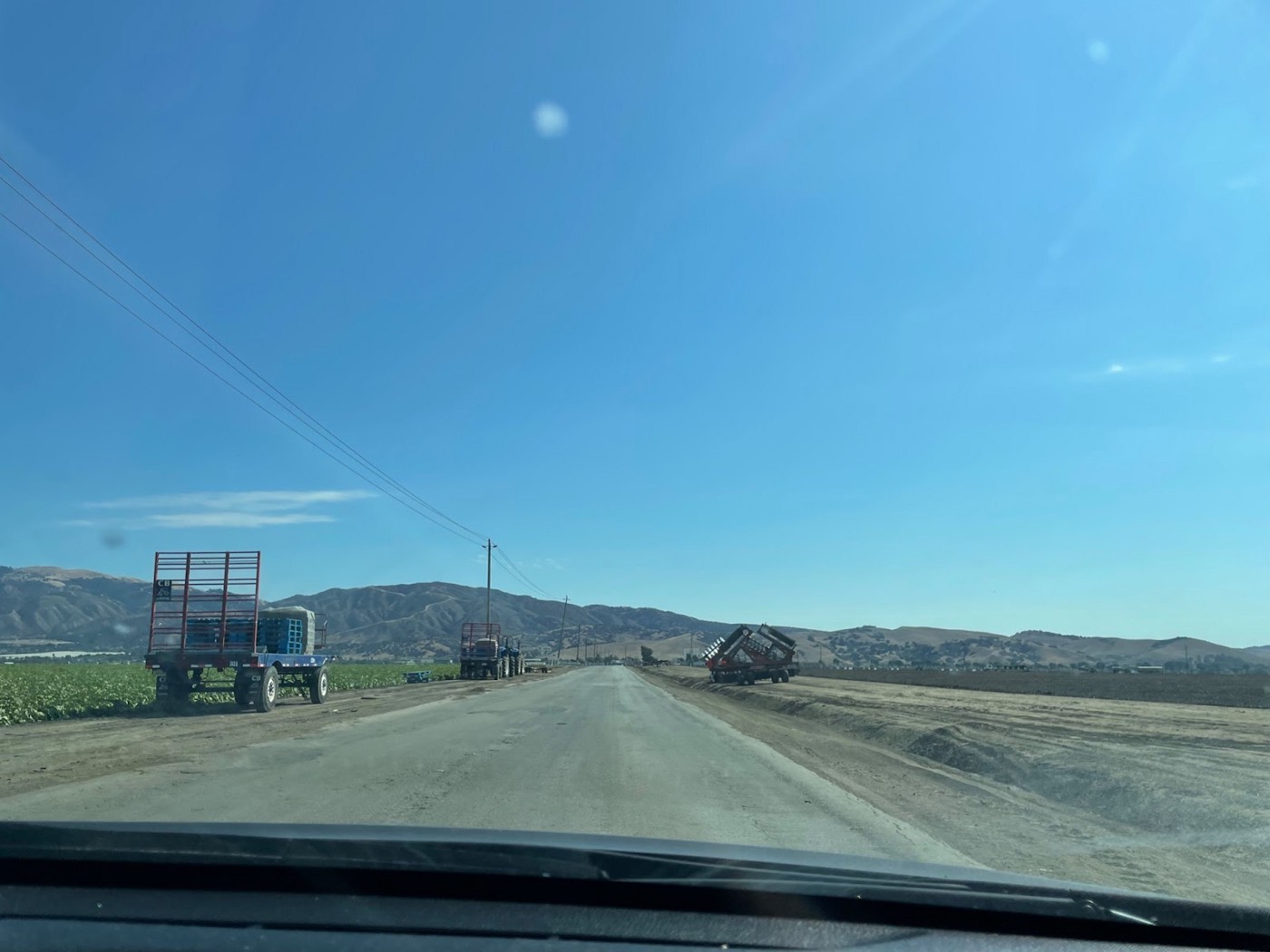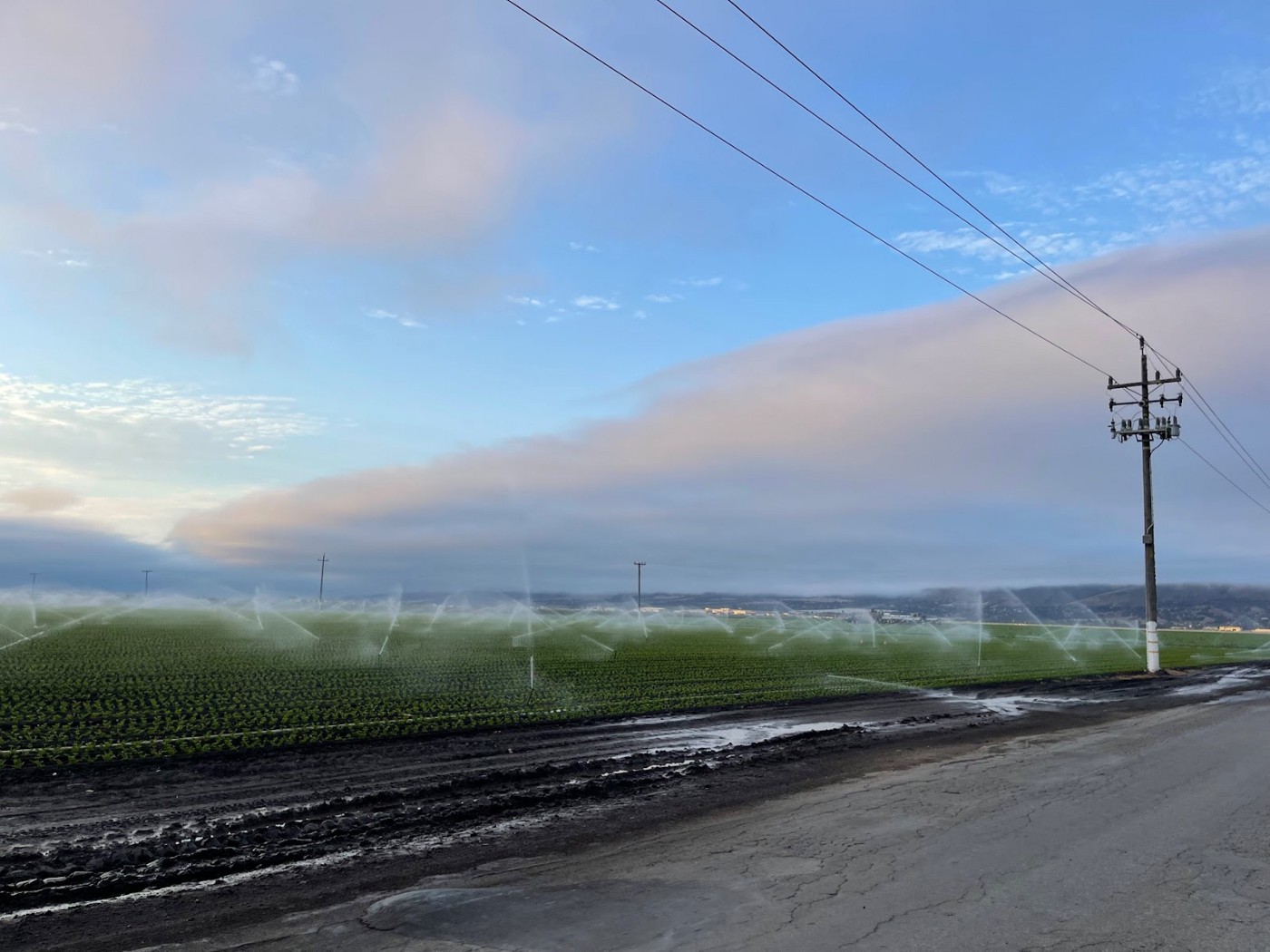At the beginning of 2022, we began the Floodgate Reactor program with the hopes of finding a successful startup idea and learning how to build a successful company. We started the program with an idea in cybersecurity related to vulnerability patch management. By the end of the summer, we were working on an idea that focused on solving farmer labor shortages and building a global talent marketplace. In this blog post, we will discuss our journey and how our ideas changed over time.
 Picture of us driving through Salinas, California.
Picture of us driving through Salinas, California.
Day 1: First Day — Pivot!
Coming into the Floodgate Reactor program, we were working on building a better way for companies to patch security vulnerabilities in their systems. We were interested in this idea since we both had experience in cybersecurity and knew that patching vulnerabilities was a huge problem. By this time, we had a pilot partner that gave us access to their patching ticket data. We used this data to prove that we could help automate some of the security patching process, however the pilot partner told us that this issue was not top-of-mind, and in fact they preferred the manual data entry for liability reasons. After hearing this, we saw that our main hypothesis (that people would want automation) might be wrong. Furthermore, we were worried about the market size of this industry and the competition that already does patch automation.
Because of these reasons, we decided to go back to the drawing board. We made a list of every idea we thought was interesting and after only a day of brainstorming, the list had over 50 ideas. Some of these ideas included:
- Web3 smart contract patching
- Financial credit coaching for young people
- Shit tech: connecting people to a network of bathrooms
We had lots of ideas in many different industries…
Day 7: Narrowing Down Ideas
After coming up with a list of ideas, we needed to find the best ones. In order to narrow down the list, we made criteria to evaluate the ideas and scored each idea the criteria. Our criteria were:
- Usefulness + meaningfulness
- Technical feasibility
- Market size
- Experience/connections
- Potential to be a profitable business
These aren’t necessarily the right or the best criteria to evaluate the ideas, but they gave us a framework to think about the ideas in comparison to one another.
After this process, we had a list of 10 or so ideas. We researched these ideas in depth and tried to poke holes in them. After doing this, there were three ideas that stood out to us over the others. These ideas were:
- Investment visas (EB-5 program)
- Labor market for retail and fast food workers
- Smart contract understanding
Now, we successfully narrowed down 50 ideas to 3. We decided to dive deeply into the investment visa idea first and be ready to pivot to the other ideas if we hit a wall. Our idea at this point was related to the EB-5 program, which is a US visa program that allows foreign investors to invest around $$$1M in a US business in exchange for a green card. We saw that there were many players in the space and that the process was complicated. Therefore, we thought that we could use technology to streamline the process.
Day 14: Calling, Calling, Calling
Now that we had a space and problem to focus on, we had to learn more. We decided we needed to contact people that work in the immigration space. We made a list of different stakeholders in the EB-5 program and gathered emails and cell phone numbers for immigration lawyers, EB-5 visa recipients, and the real estate investments that people could invest in via EB-5. We spent time going through our list of leads by emailing, setting up meetings, and cold calling. We took notes for each conversation and learned a lot by talking to different players in the industry.
After some of these conversations, we learned that the EB-5 program functions pretty well already and that the market size of the EB-5 program is small for a venture-backable business. We then looked at other visa categories and realized that focusing only on the EB-5 visa was too narrow-minded. The visa market as a whole was huge, and we thought that there could be interesting opportunities in other visa categories.
Eventually, we decided to explore every US visa in-depth, from student visas to farmworker visas. We did research on each visa and talked to as many people as we could to learn quickly. After exploring all the different kinds of visas, we found one visa category that was the most appealing due to the number of visas issued every year: H-2A visas. These visas are temporary (seasonal) work visas, where workers tend to stay in the US for 9 months or less each year.
We found that we connected to this problem space on a deep level. Lucas’ father and grandparents immigrated to the US from Colombia, and through hard work his dad became successful in engineering and finance. Shreyas grew up on a farm and his parents came to the US through an immigration program. We have both seen the power of the American dream and want to help as many people achieve this dream as possible.
Day 21: Emailing Fail and Lessons
For the H-2A program, the Department of Labor (DOL) releases a list of every company that uses these visas, along with the emails and phone numbers of the point person for each company and the attorney that helped them file the visa. To us, this was a gold mine since we could set up many conversations with companies that use these programs and find what the biggest pain points are.
Before we sent out cold emails, we decided to build a website to establish credibility in the space and encourage people to talk with us. We built a website that provided data analysis for the DOL H-2B data: www.visadetective.com. Users could interact with the visualizations and use them to gain insights on the biggest employers and attorneys in the space.
After building this tool, we set out to start a mass email campaign to attorneys that process H-2 visas and companies that use the H-2 program. We used snov.io to run the campaign from our @visadetective.com emails. Overall, we sent out thousands of emails…and almost all of them went to spam. We learned that you need to warm up your inbox with a service like Woodpecker or else your emails will get flagged as spam. Also, it is better to use your .edu email, since it will likely not get flagged as spam.
After this experience, we came to the conclusion that cold email campaigns may not be the best way to get leads since they are impersonal and don’t look real, even if they don’t get sent to spam. We found much better success with direct emailing with personalized emails and using LinkedIn to connect to people in the industry.
Day 28: Unit Tests
By this point, we had spoken to many people in the H-2A industry, including attorneys, farmers, worker rights groups, and other companies trying to simplify the process. We had conviction that the process was broken and we could improve it. So the next step was to start planning how to begin to build and test out our hypotheses. Our main thesis was that we could build a tech-enabled marketplace solution to connect employers to short-term, seasonal employees. We decided to build “unit tests” that would each serve to validate a hypothesis that was vital for proving our main thesis. Here are the unit tests we came up with:
- Can we source a large number of employers who are currently utilizing the H-2A program and convince them to switch to our method?
- Can we source a large number of employers who are NOT currently utilizing the H-2A program and convince them to use it?
- Can we find cheaper housing solutions for H-2A farmers?
- Can we find and collaborate with an established immigration attorney to handle the legal aspects of H-2A visa sponsorship for cheaper at scale?
- Can we successfully recruit a large number of prospective foreign candidates?
- Can we successfully vet candidates that have relevant experience, dependably, and reliably entirely remotely?
- Can we improve/automate the existing workflows of an immigration attorney or firm to reduce the cost structure?
We ordered them in terms of how important they were for our underlying hypothesis to be true. We then started to work on the first unit test.
Day 35: Visiting Farms in Salinas
As part of our outreach and quest for knowledge, we met a Stanford researcher who focuses on the impact of a previous immigration program known as the Bracero Program. He suggested that we visit the Salinas valley, where he would put us in contact with farmers, business people, and politicians in the area.
We were able to set up a trip and ended up meeting many awesome people in Salinas. We found that everybody was kind and willing to help–one person gifted us a book he was reading only minutes after we met him! We talked to large farmers, small farmers, politicians, and people representing many farmers. We learned more intimately how the farming industry works. Overall, the trip gave us confidence that some of our ideas could have a huge impact.
 Farm in Salinas, California.
Farm in Salinas, California.
Day 42: Wrapping Up
After going through the idea maze and changing our idea from cybersecurity to farming visas, we felt that we had successfully found an interesting and important problem to solve. Due to personal commitments, we decided to not pursue the idea after the Floodgate program ended. However, we are considering working on aspects of it in the coming months. We also used our knowledge of the space to build a tool here: www.h2avision.org that helps track violations of the H-2A program by farms.
We hope that this journey has been useful for anyone thinking of starting a company and who is still in the idea stage.